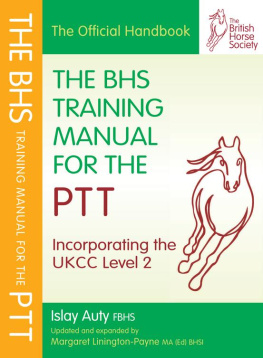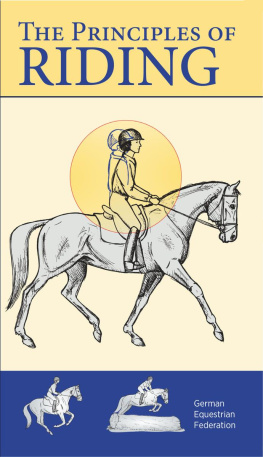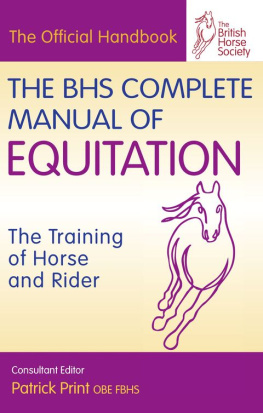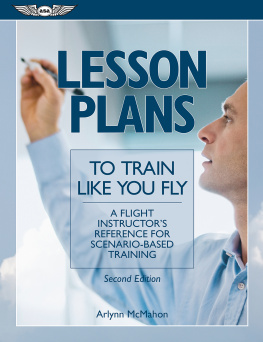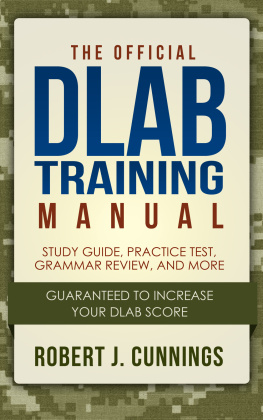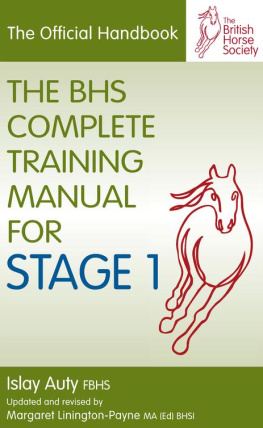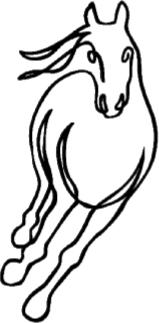The aim of this book is to provide students working towards the Preliminary Teaching Test with detailed guidance on how to prepare thoroughly for the examination and how to achieve UKCC Level 2 should they wish to do so.
You will find that the book echoes the structure of the syllabus and follows a clear pattern. There is information on What the assessor is looking for, followed by advice on How to become competent.
It is important to realise that you can never achieve competence purely by reading a book, or indeed any number of books. Books can enhance and assist you in your study, but teaching riding is a very practical subject. It is up to you to ensure that your competence develops from practical experience, through observing lessons given by well-qualified or experienced teachers, and by developing your own practical teaching skills in as many controlled supervised situations as you can.
You will by now have had some experience of taking exams yourself, either through Pony Club tests, in taking your BHS Stage 1 and 2, or NVQ assessment and verification, but the PTT is likely to be the first time that you are assessed as a teacher.
It is therefore helpful during your training if you have had some genuine experience of riders who are novices or even complete beginners. You can gain this experience in the following ways:
- By observation in a commercial riding school of weekly riders of different ages and abilities.
- By leading novice children or adults in lessons under the supervision of a qualified coach. This could be done in association with a commercial riding school.
- By helping novice or beginner riders to lead their horses to the school, adjusting stirrups and girths and helping them again at the end of a lesson.
- By watching as many lessons as you can, given by more experienced coaches.
- By taking your generic BHS UKCC Level 1 endorsed qualification.
These opportunities allow you to appreciate just how limited the complete beginners experience might be. It should help you to remember never to assume that a rider knows something already and to ensure that you teach every aspect of a lesson.
Study the syllabus carefully and discuss with your trainer where your weak areas might be, as well as your strengths. Make a plan for developing confidence and competence in the areas where you feel less secure. For example, if you feel nervous standing up and giving a short presentation, make sure that you take every opportunity to practise this by talking to groups of friends, family or informal gatherings so that you develop confidence. Confidence comes with practice and learning to teach takes time and practice.
You must feel confident about:
- Projecting your own voice from the start of the lesson.
- Teach according to what is happening in front of you, not to a stereotyped plan which may not apply to the pupils you have.
- Adhering to clear basic principles such as good basic position, application of the aids and control and understanding of the horse.
- Progressing the lesson in the way you believe is in the best interests of the class or individual, not because you think the assessors want to see you do something particular.
Your own presentation is important because it will give you an air of authority and image, which is important for an instructor/coach.
- Make sure that you have a hat, whip and gloves close by so that in extreme cases you could ride a pupils horse that was behaving badly. If you teach in your hat the chin strap may be undone so that you can speak easily. It is not necessary to carry a stick while teaching.
- Dress as for previous exams (beige or fawn breeches, boots, shirt and tie and hacking jacket, have top coat or waterproof in case it is either cold or wet).
- Your image should be neat, tidy and professional.

Typical exam turnout neat, tidy and professional.
The assessor will be looking for competence in teaching correct basic principles. You must be able to:
- Demonstrate self-confidence.
- Show an ability to project your voice both indoors and outside, and maintain an audible voice throughout.
- Control your riders.
- Develop a rapport with your riders and encourage them to think for themselves and give you feedback.
- Progress your pupils to some benefit and improvement.
- Deal with simple situations as they arise (e.g. if a horse is apparently lame, you must comment on it; if a rider appears worried, you must attempt to address the problem).
- You must demonstrate a competence to discuss basic lesson plans for a variety of teaching situations.
If at any stage the assessor feels that you are drifting away from developing your lesson satisfactorily, then he or she may suggest that you take a certain path (e.g. introduce jumping position if you are giving a jump lesson and have spent rather too long on the flat). Always regard this as a help, not an interference the assessor is aiming to help you to show your best and is usually more aware of the time limitations of the exam than you are.
On arrival at the exam centre for your Preliminary Teaching Test, you will be briefed by the chief assessor, who will introduce the team of assessors for the day. The days events will be explained to you and there will be a programme clearly listed for your benefit. The chief assessor will give each candidate a piece of paper on which there will be:
- A number.
- A subject for your class lesson (which will either be a lesson on the flat or one involving poles or jumps).
- A subject for your presentation.
- Whether you are required to give a lead-rein or a lunge lesson.
The PTT now consists of six units which can be taken altogether, individually or in any format that suits you.
The result sheet will be sent to you a few days after taking the exam and, if you have been successful, you will receive a certificate of achievement as well.
When you register for your PTT you will have the opportunity to also register for your United Kingdom Coaching Certificate (UKCC) Level 2 endorsement. The UKCC is a government initiative to introduce a standardised coaching qualification across all sports in the UK. Sportscoach UK (SCUK) is responsible for this, and the British Equestrian Federation (BEF) works with SCUK to ensure its delivery across all the BEF member bodies. Equestrian Qualifications GB (the new name for the awarding body arm of the BHS) is responsible for awarding the qualification.

